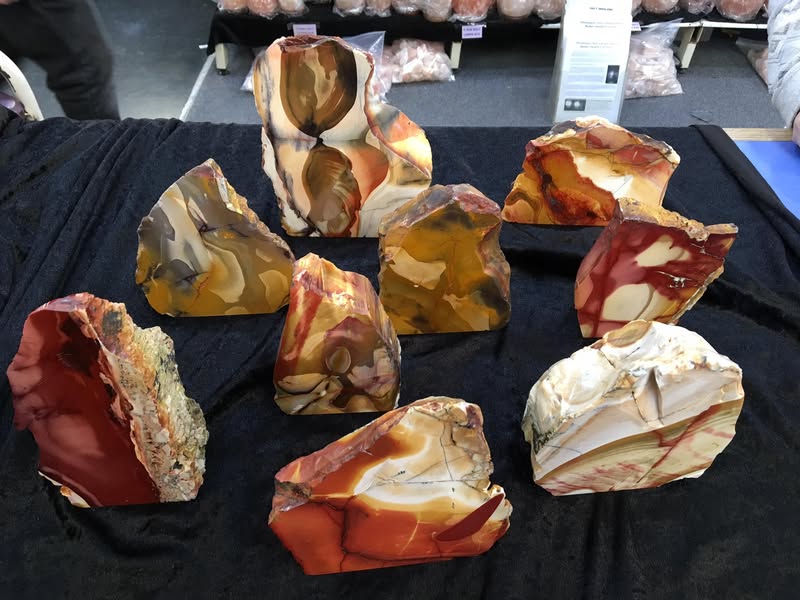
Mookaite: The Fossilised Gemstone of Ancient Australian Ocean
Share
Mookaite, also known as Mookaite Jasper, is a stunning semi-precious stone found primarily in Western Australia. Known for its earthy colours and intricate patterns, this gemstone is not only admired for its beauty but also valued for its geological and cultural significance. The stone primarily originates from the Kennedy Ranges near Mooka Creek, and is a unique variety of chalcedony, which is a microcrystalline form of quartz.
Crystal World Exhibition Centre owns a Mookaite mining lease, this allows us to actively mine and source Mookaite Jasper directly from its natural locality.
Geological Formation and Composition
Scientifically referred to as Windalia Radiolarite, Mookaite's origins trace back to the Cretaceous period, when the oceans covering Western Australia were teeming with microscopic marine organisms known as Radiolaria. These tiny creatures, measuring just 0.1 to 0.2 millimetres, had silica-rich skeletons that settled onto the seabed as they died. Over millions of years, these skeletons were compressed and mineralised, transforming into sedimentary rock. This process, enhanced by silica-rich groundwater, formed the gemstone known today as Mookaite.
Mookaite's colours—deep reds, vibrant yellows, earthy whites, and occasional purples—are due to the presence of iron and manganese impurities. These elements interacted with the silica during the mineralisation process, creating its striking hues. Notable specimens of fossil Radiolaria have been found at Mooka Springs, highlighting the stone's direct connection to the Earth's ancient marine history.
Physical Characteristics
Mookaite is prized for its durability, with a hardness of 6 to 7 on the Mohs scale, making it suitable for jewellery and decorative items. However, its cryptocrystalline structure makes it somewhat brittle, meaning it can fracture under stress. This balance of strength and vulnerability contributes to its appeal as both a practical and aesthetic material.
Cultural Attributes
Mookaite holds deep cultural significance in Indigenous Australian traditions, often seen as a symbol of strength and connection to the land. It is believed to offer grounding properties, helping individuals maintain emotional balance and resilience. The name “Mookaite” comes from the Aboriginal word “Mooka,” which means running waters, referring to the springs near Mooka Creek where the stone was first discovered. This connection to water ties back to its marine origins millions of years ago.
Uses and Applications
Due to its vibrant appearance, Mookaite is widely used in jewellery, such as beads, cabochons, and polished stones. It’s often shaped into bracelets, necklaces, and earrings that showcase its natural patterns. It is also favoured for ornamental carvings and display pieces, making it a versatile and sought-after gemstone.
Discover Mookaite
Fossilised Radiolaria specimens from the Cretaceous period found at Mooka Springs, along with Australian Mookaite Jasper, offer a fascinating glimpse into Earth's geological past. Mookaite is not only a visual marvel but also a scientific treasure that continues to captivate researchers and collectors.
https://www.crystalworldsales.com/collections/mookaite
References:
-
Geology Science: Mookaite Jasper - Properties, Formation, Locations.
-
Stone Mania: Mookaite Properties, Meaning, Facts and Photos.
-
Beautiful Aura Crystals: Mookaite - The Crystal Formed from Aquatic Skeletal Remains.
-
The Gem Library: Mookaite Jasper - Meanings, Healing Properties, Facts and More.



